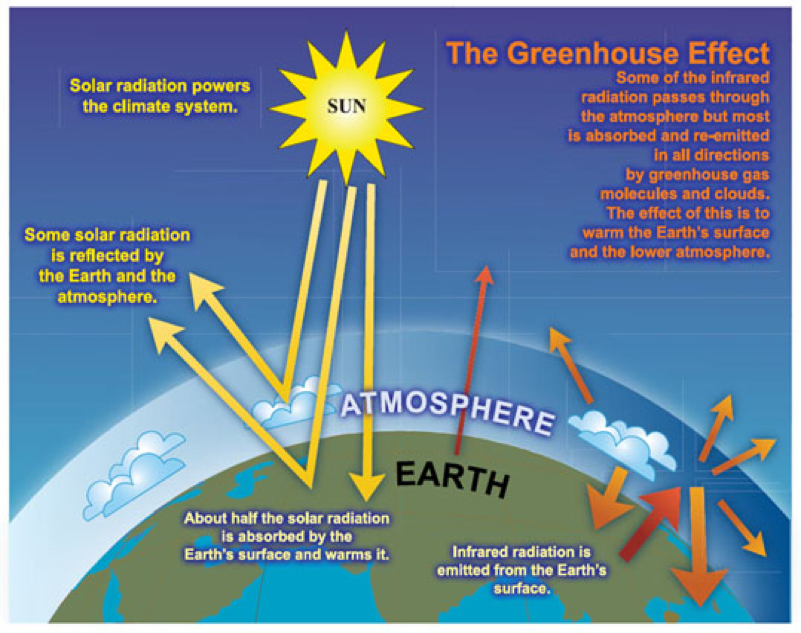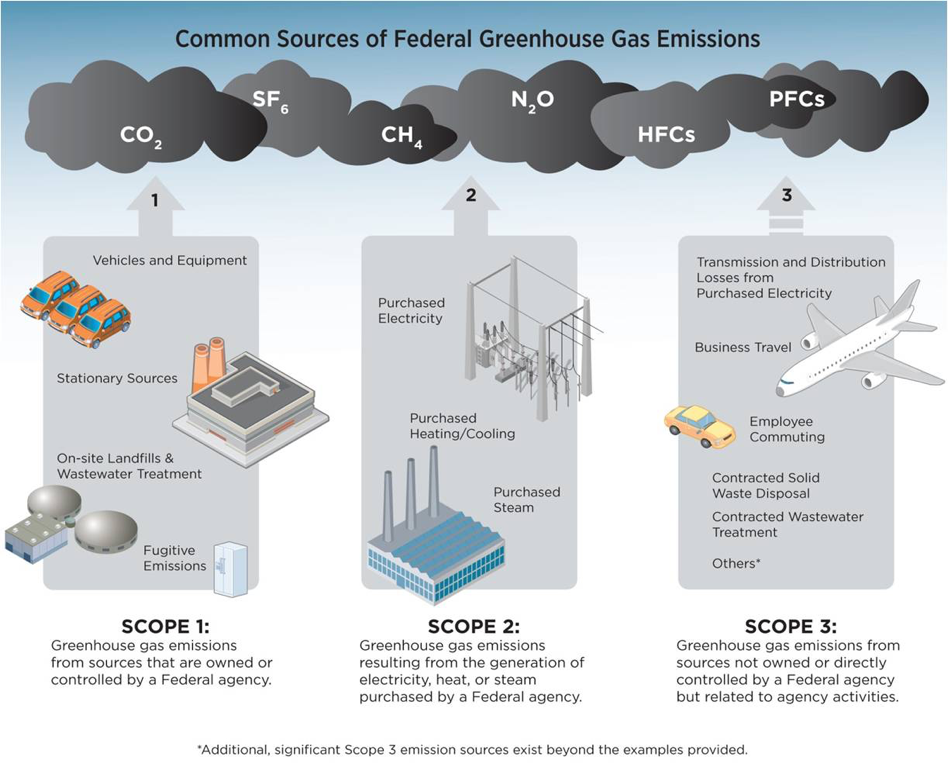As outlined in Executive Order (EO) 14057, Catalyzing Clean Energy Industries and Jobs Through Federal Sustainability, the NIH shall reduce Greenhouse Gas (GHG) Emissions, achieve net-zero emission buildings, campuses, and installations, and consume carbon-free electricity. Additionally, EO 14008, Tackling the Climate Crisis at Home and Abroad, requires federal agencies to combat climate change. The NIH shall reduce GHG emissions in accordance with these requirements as detailed below.
- The NIH shall Reduce Scope 1 and 2 Greenhouse Gas GHG emissions by 65% by 2030 from a 2008 baseline.
- The NIH shall Reduce Scope 3 GHG emissions by 25% by 2030 from a 2008 baseline.
- The NIH shall achieve net-zero emissions across its portfolio of buildings, campuses, and installations by 2045.
- The NIH shall reduce GHG emissions by 50% from buildings, campuses, and installations by 2032 from 2008 levels.
- The NIH shall design new construction and modernization projects greater than 25,000 Gross Square Feet (GSF) to be net-zero emissions by 2030.
To demonstrate progress in fleet management and sustainability, NIH publishes an annual Sustainability Plan (SP) and reports progress to their parent government agency, the Department of Health and Human Services (HHS). HHS adheres to the requirements of EO 14008 and EO 14057 and publishes an annual Sustainability Plan to demonstrate overall agency progress.
What are GHGs?
GHG is a collective term for airborne chemicals in the earth’s atmosphere that prevent heat from escaping into space. The burning of fossil fuels, use of fluoride gases, and deforestation increase atmospheric concentrations of GHG. As this occurs, the global average temperature increases, triggering related climate changes and impacts on human and environmental health. The resultant phenomenon, known as the Greenhouse Effect, is shown below.

Categories and Sources of Federal GHG Emissions
GHG emissions are separated into three categories: Scope 1, Scope 2 and Scope 3.
- Scope 1 emissions are direct emissions generated by NIH facility processes. Some examples include boilers, chillers, generators, and other power plant operations.
- Scope 2 indirect emissions generated from consumption of purchased electricity.
- Scope 3 emissions are indirect emissions generated from sources such as employee business travel and employee commuting.
The figure below details common categories and sources of GHG from federal agencies.

GHG at the NIH
Any gas that absorbs and emits infrared radiation in the wavelength range emitted by earth is considered a GHG. Water vapor is the most abundant GHG in the earth’s atmosphere. Regulated GHGs include carbon dioxide (CO2), methane (CH4), nitrous oxide (N2O), and fluorinated gases: hydrochlorofluorocarbons (HCFCs), hydrofluorocarbons (HFCs), perfluorocarbons (PFCs), and sulfur hexafluoride (SF6). Some of these regulated GHGs are emitted from facility and laboratory sources in day-to-day operations at NIH, as shown below.
Greenhouse Gas
| NIH Facility Source | NIH Laboratory Source |
Carbon Dioxide (CO2)
| Combustion of fuel oil, natural gas, propane, and waste to produce heat and electricity | Dry Ice for shipping precious specimens and CO2 for incubators |
Methane (CH4) | Transmission and storage of natural gas and diesel fuel
| NIH livestock |
Nitrous Oxide (N2O) | Combustion of fuel oil, natural gas, propane, and waste to produce heat and electricity | Tracer gas and inhalation anesthetic in medical, dental, and veterinary procedures |
Hydrochlorofluorocarbons (HCFCs) | HFC-22 emissions from chiller operations | |
Hydrofluorocarbons (HCFC) | HFC-134a emissions from chiller operations
| Inhalation anesthetics (sevoflurane and isoflurane) and HFC-134a is used as a carrier as in Ethylene Oxide Sterilants |
Sulfur Hexafluoride (SF6) | Dielectric used in the transmission of electricity | Dialectric for transmission electron microscopes, tracer gas in fume hoods, microbubbles as contrast agent in ultrasound equipment, treatment of retinal detachment by reinopexy. |
According to global EPA data the primary global greenhouse gas emissions are approximately 76-80% carbon dioxide, 10-16% methane, 5-7% nitrous oxide, and 2-3% fluorinated gases. Fluorinated gases are emitted in smaller quantities, however, they have a high global warming potential.
Ozone as a greenhouse gas in the lower atmosphere (troposphere) and filter of harmful sunlight wavelengths in the upper atmosphere (stratosphere):
Tropospheric ozone (O3): Ozone in the lower atmosphere (or tropospheric ozone) is an atmospheric pollutant, however, ozone (O3) is not emitted directly by car engines or by industrial operations, but formed by the reaction of sunlight on air containing hydrocarbons (particulate matter) and nitrogen oxides that react to form ozone directly at the source of the pollution or many kilometers down wind. Tropospheric ozone acts as a greenhouse gas, absorbing some of the infrared energy emitted by the earth. The CAA regulates ozone formation in the troposphere by establishing ozone season reductions in particulate matter and gases like sulfur dioxide and nitrous oxides that facilitate the formation of ozone in the troposphere.
Stratospheric ozone (O3): Ozone in the upper atmospheric ozone layer (or stratosphere) filters out harmful sunlight wavelengths. In recent decades, the amount of ozone in the stratosphere has been declining, mostly because of emissions of chlorofluorocarbons (CFCs) and similar chlorinated and brominated organic molecules, which have increased the concentration of ozone-depleting catalysts above the natural background. The CAA not only regulates the GHGs contributing to the depletion of the protective ozone layer (e.g. fluorinated gases such as CFCs, HFCs, and SF4) but has established National Ambient Air Quality Standards (NAAQS) which vary across the nation pending on geographic location. Some areas of the nation have stricter air quality standards than others especially areas that are located in established hazardous air pollutant (HAP) zones.
Greenhouse Gas Contact
Division of Environmental Protection